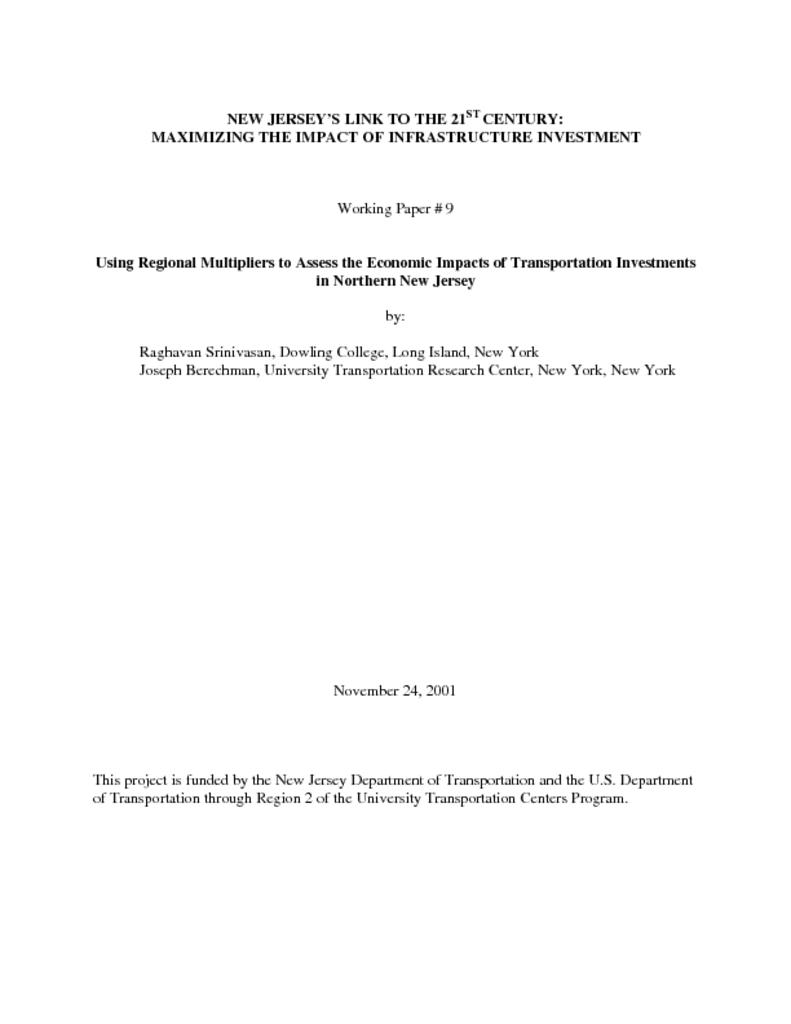The main objective of this paper is to assess key economic impacts, mainly output, employment, and earnings, in Northern New Jersey from recent major transportation infrastructure investments, mainly in rail. This effort is part of the New Jersey 21st Century study carried out by the University Transportation Research Center, Region II, for the New Jersey Department of Transportation. Regional multipliers, derived from input-output analysis, have been used widely to measure economic impacts. The framework for this method was initially developed in the late 1930's and has undergone many refinements by researchers and agencies including the Bureau of Economic Analysis (BEA). The fundamental purpose of the input-output framework is to study the interdependence of industries in an economy and estimate the ripple effects that an investment in one economic sector has on another. For example, if industry A increases its production by a certain amount, it will purchase additional goods and services from other industries. These industries will, in turn, acquire additional quantities of their respective inputs. Industries that produce these inputs will have to increase their output to satisfy the demand and so on. This process is regarded as the ripple effect in the economy caused by the original change.




